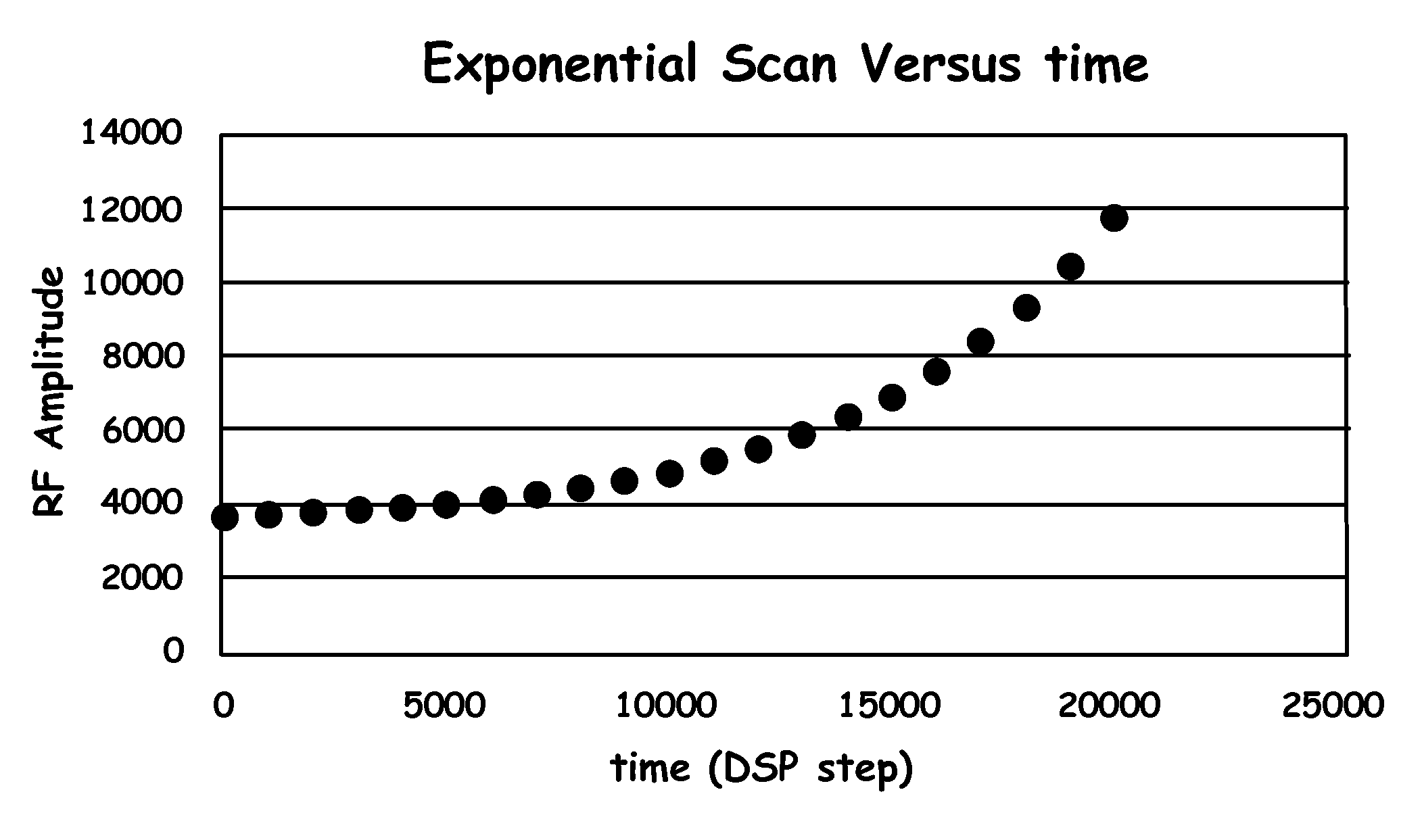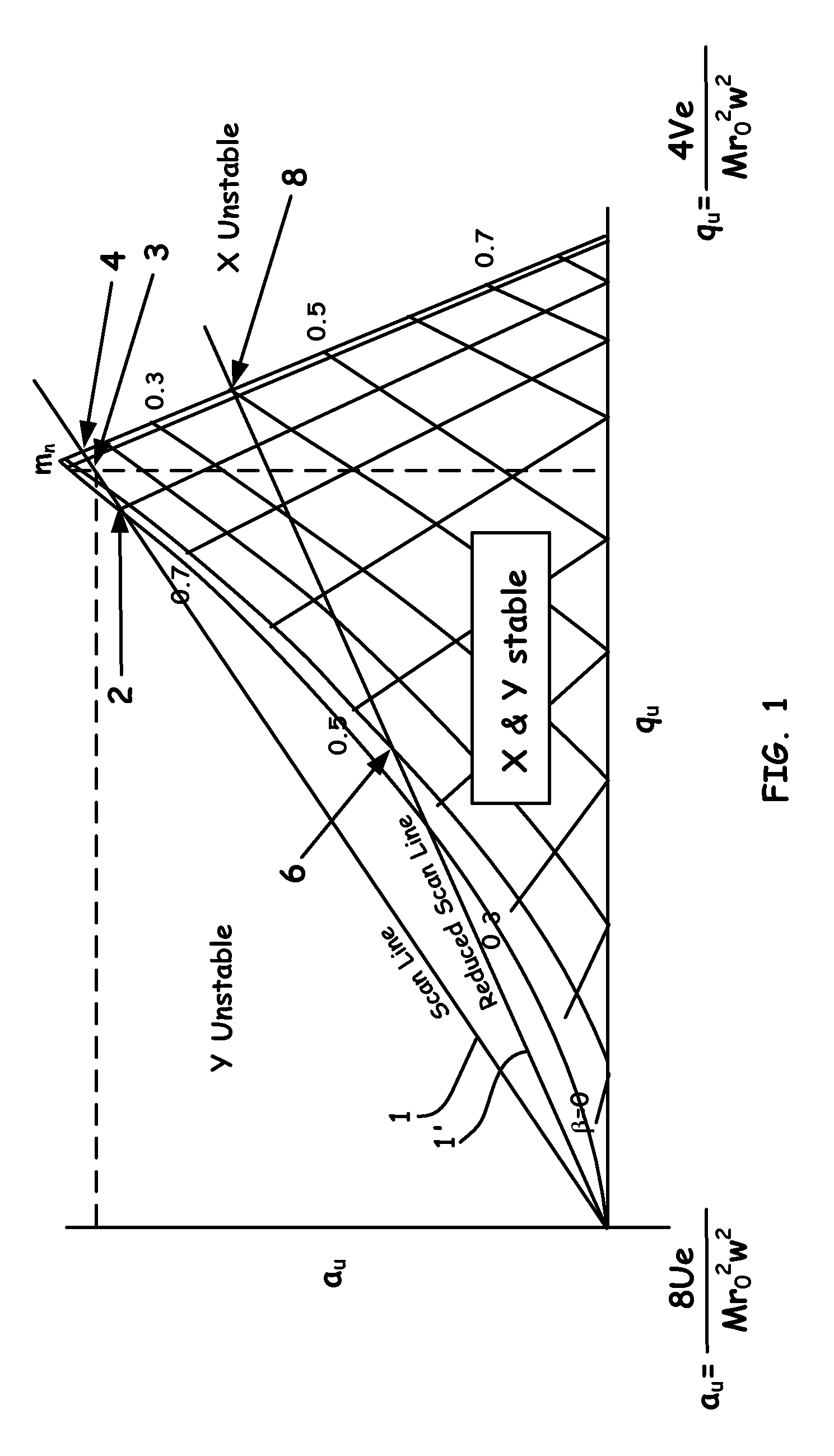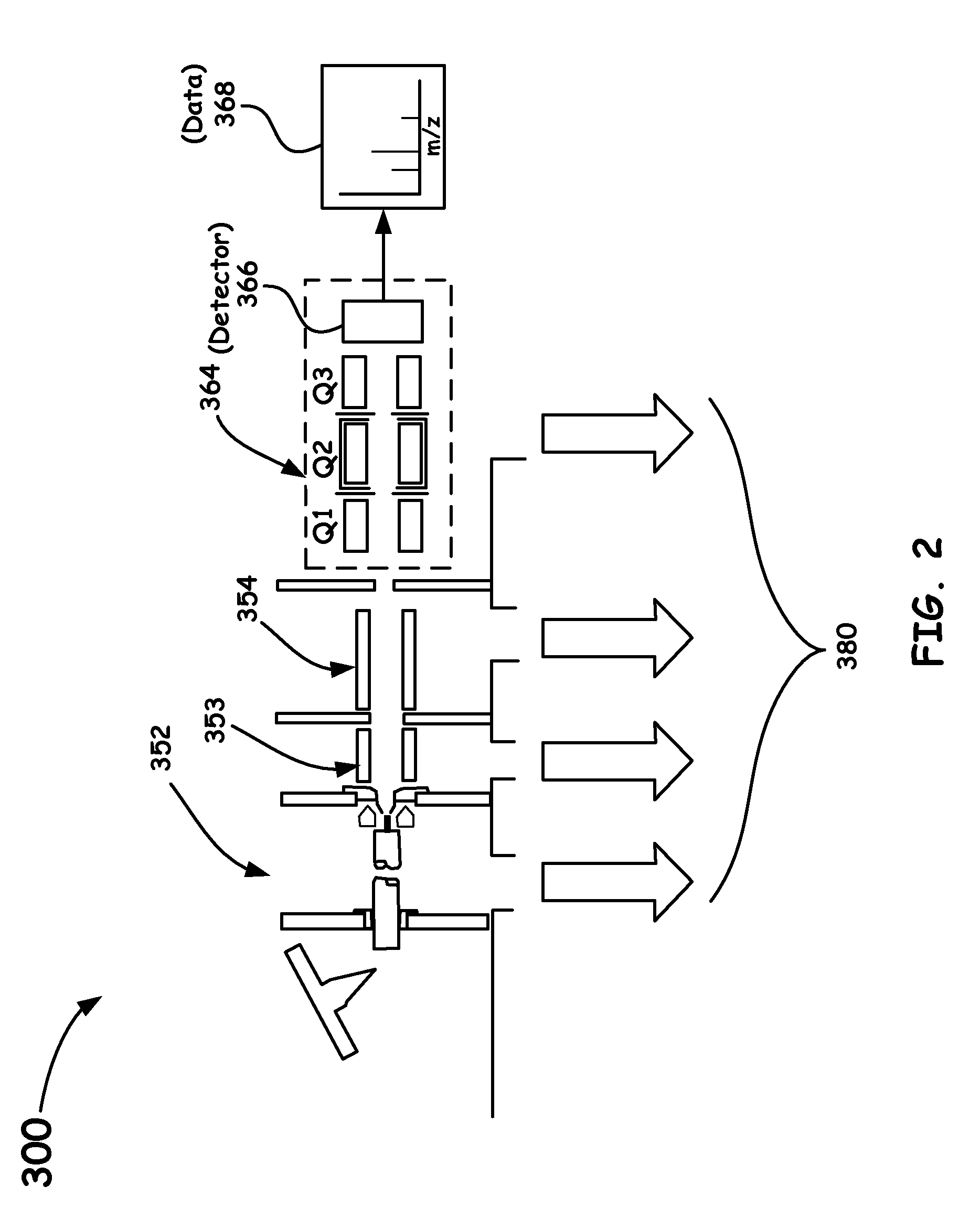Exponential scan mode for quadrupole mass spectrometers to generate super-resolved mass spectra
a mass spectrometer and scan mode technology, applied in the field of mass spectrometry, can solve the problems of increasing the cost of mass resolving power, and sensitivity, and achieves the effect of reducing overall cost, enhancing the performance of mass spectrometers, and little additional hardware cost or complexity
- Summary
- Abstract
- Description
- Claims
- Application Information
AI Technical Summary
Benefits of technology
Problems solved by technology
Method used
Image
Examples
case 1
te Resolution
[0079]The ratio a(t) / q(t) is the slope of the operating line. In this case, one chooses the slope so that the operating line passes through the apex of the stability diagram (q*,a*). Then set U0=0, so that the operating line is the same for all ion masses, the line passing through the origin and (q*,a*). When U0=0, the ratio a / q is constant and equal to 2c1 / c2. One denotes the ratio 2c1 / c2 by s in the following derivations:
[0080]s=2c1c2=2U(t)V(t)=a(t)q(t)(12)
[0081]Let s* denote the ratio of the apex coordinates a* / q*. To place the operating line at the apex of the stability region, we choose s equal to s*.
[0082]In this case, the expression for the entrance time, given in general, in Equation 9, simplifies considerably. The second term in the right-hand side of Equation 9 is zero because U0=0. Setting 2c1=s*c2 produces the penultimate expression, which is further simplified by replacing s* with a* / q*, multiplying top and bottom by q* and cancelling the common facto...
case 2
nt Peak Width
[0088]The typical mode of operation of a quadrupole mass filter is constant peak width mode. To produce constant peak width, one sets s=s* and U0 to a non-zero constant. When U0 is non-zero, the slope of the operating line changes as a function of time.
[0089]a(t)q(t)=2U(t)V(t)=2(c1t+Uo)c2t=2c1c2+2Uoc2t(15)
[0090]The slope would be infinite at t=0, but the operating line is undefined for t=0. As t increases, the slope gradually decreases and converges to a / q=s*, the apex of the stability region.
[0091]Now, consider an ion of mass m and charge 1, as before. The time at which t enters the stability region is given by Equation 16, formed by setting 2c1=s*c2 (i.e., s=s*) in Equation 9:
[0092]tL=a*-sLq*k(s*-sL)m-2Uokc2(s*-sL)=q*kc2m-2Uoq*kc2(a*-sLq*)=t*-2Uoq*kc2αL,(16)
where t* denotes the time that mass m crosses the stability region in the infinite resolution case:
[0093]t*=q*kc2m(17)
and αL is a constant that depends only on the geometry of the stability...
case 3
nt Resolving Power
[0102]To achieve constant resolving power, we set U0 back to zero, but choose s<s*, recalling that s is defined as 2c1 / c2. In this case, the operating line does not change with time, but lies below the vertex of the stability diagram.
[0103]Let Ds denote the difference s*−s. Then, Equation 9 becomes:
[0104]tL=a*-sLq*kc2(s-sL)m=a*-sLq*kc2(s*-Δs-sL)m=q*(a*-sLq*)kc2[(a*-sLq*)-Δs]m=q*mkc2(11-Δsa*-sLq*).(23)
[0105]Because DsLq*, the right-hand side of Equation 23 can be approximated by a first-order Taylor series:
[0106]tL~q*mkc2(1+Δsa*-sLq*)=q*mkc2(1+ΔsαL).(24)
[0107]The time-centroid of the peak is given by:
[0108]tC~q*mkc2[1+Δs2(αL+αR)].(25)
[0109]If we calibrate as before (Equation 14), we have:
[0110]mC~m[1+Δs2(αL+αR)].(26)
[0111]In this case, we see that the mass shift is linear in mass. The resulting peak width is also linear in mass, as shown by Equation 27:
Δm˜mΔs(αL−αR) (27)
[0112]If we define the mass resolving power R as m / Dm, t...
PUM
| Property | Measurement | Unit |
|---|---|---|
| mass | aaaaa | aaaaa |
| mass distribution | aaaaa | aaaaa |
| acquisition time | aaaaa | aaaaa |
Abstract
Description
Claims
Application Information
 Login to View More
Login to View More - R&D
- Intellectual Property
- Life Sciences
- Materials
- Tech Scout
- Unparalleled Data Quality
- Higher Quality Content
- 60% Fewer Hallucinations
Browse by: Latest US Patents, China's latest patents, Technical Efficacy Thesaurus, Application Domain, Technology Topic, Popular Technical Reports.
© 2025 PatSnap. All rights reserved.Legal|Privacy policy|Modern Slavery Act Transparency Statement|Sitemap|About US| Contact US: help@patsnap.com



